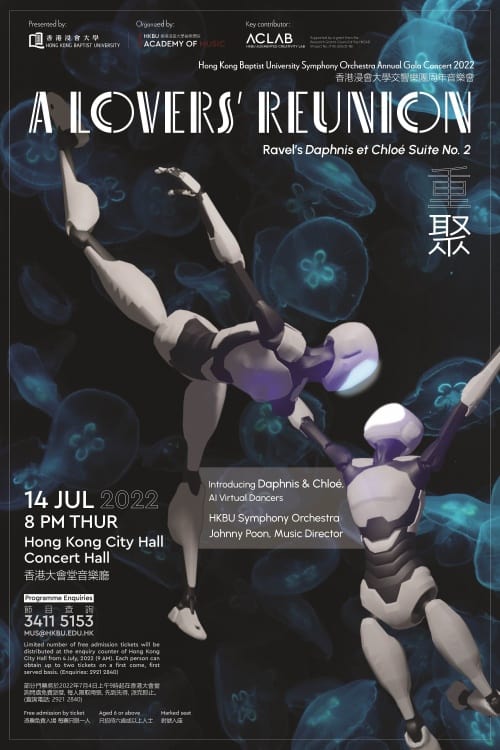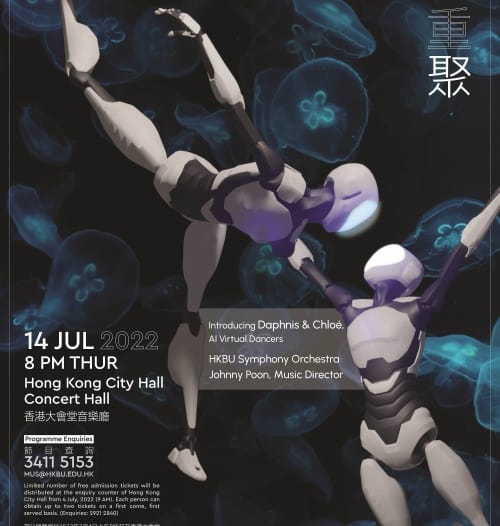An innovative human-machine collaborative concert, touted to be the first in the world, will be performed by the Hong Kong Baptist University (HKBU) Symphony Orchestra next week at the Hong Kong City Hall.
The annual gala concert dubbed "A Lovers' Reunion" will give the audience a brand-new symphonic experience driven by the integration of cutting-edge AI technologies developed by researchers from the HKBU's Augmented Creativity Lab.

The HKBU Symphony Orchestra will share the stage with an AI virtual choir to perform a newly arranged choral-orchestral version of the song Pearl of the Orient. It will be the world's first AI choir to perform a choral piece with Chinese lyrics.
“The first human-machine collaborative performance of its kind in the world presented by HKBU at the Gala Concert is an important outcome of the 'Building Platform Technologies for Symbiotic Creativity in Hong Kong' research project. It is also a milestone of AI research revealing the unlimited potential of human-machine symbiotic creativity,” said Professor Guo Yike, vice president for research and development at the HKBU Augmented Creativity Lab.
Professor Guo is the project leader of a research project entitled "Building Platform Technologies for Symbiotic Creativity in Hong Kong" – a HK$52.8 million research fund awarded by the Theme-based Research Scheme (11th round) under the Research Grants Council (RGC) for a period of five years.
He added: “HKBU is dedicated to building a world-class AI art-tech platform that will drive a new revolution that transforms the creative and cultural industries. It will enable Hong Kong to assume a leading position in art-tech on the global stage.”
For the gala concert, Professor Guo’s team has also trained an AI artist to create a cross-media visual narrative based on the lyrics and music to accompany the choral piece. The audience is invited to share the AI's imagination of Hong Kong as the Pearl of the Orient.
Another highlight of the concert is a ballet performance featuring AI virtual dancers in Ravel's Daphnis et Chloé, accompanied live by the HKBU Symphony Orchestra. The ideas for the choreography come from the natural world, which provides dance movements inspired by a newly discovered species of box jellyfish in Hong Kong. In collaboration with professional dancers from the Hong Kong Dance Company, the AI-generated dancers have been trained to perform the ballet with movement-data collected by HKBU scientists.
The concert will also spotlight the artistic prowess of our award-winning student musicians in the performances of Saint-Saëns's Introduction and Rondo Capriccioso in A minor, Op. 28; Borne's Fantaisie brillante sur 'Carmen'; and Lauryn Kurniawan's Rasa for string quartet and gamelan.
Professor Johnny Poon, who is also the music director and conductor of the HKBU Symphony Orchestra and the Collegium Musicum Hong Kong, said: "In addition to celebrating HKBU's young musicians, the innovative concert showcases how the University is using technology to push the envelope of human imagination in the arts and cultural sphere.
"By leveraging our established strengths in both the arts and sciences, HKBU is taking a trans-disciplinary approach that will advance the development of the arts, culture and creative media in Hong Kong. Our art-tech research also enables musicians and artists to go beyond the traditional forms and interact with the audience in brand new ways."



